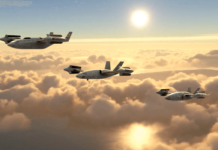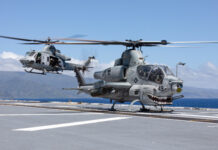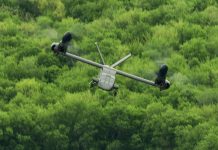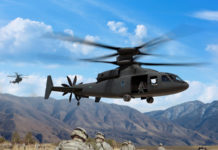The US Navy has begun the search for replacements for its shipboard manned and unmanned vertical lift aircraft.
The Future Vertical Lift (Maritime Strike) or FVL (MS) program seeks to develop and acquire a ‘family of systems’ (FoS) including both manned and unmanned aircraft to replace rotary lift aircraft currently deployed aboard US Navy (USN) combat ships. The ‘Maritime Strike’ designation references the combat and combat support role played by these aircraft.
The current vertical lift maritime strike assets of the USN consist of manned MH-60R ‘Romeo’ and MH-60S ‘Sierra’ Sea Hawk helicopters and the MQ-8B/MQ-8C Fire Scout rotary-wing UAVs. Both Sea Hawk variants are multi-mission aircraft. The Romeo is primarily optimised for combat roles and is considered the cornerstone of the Navy’s helicopter concept of operations. The Sierra performs a wide range of missions including Mine Countermeasures (MCM), special operations forces (SOF) support, maritime interdiction and surface warfare, search and rescue, and general support. The Fire Scout is employed for Intelligence, Surveillance, Reconnaissance and Targeting (ISR&T), communications relay, and supply missions. The smaller MQ-8B Fire Scout is currently being phased out. The larger MQ-8C variant was introduced in 2019 and is expected to reach the end of its service life in the 2030s. The Navy also expects to begin retiring both Sea Hawk variants during the 2030s.
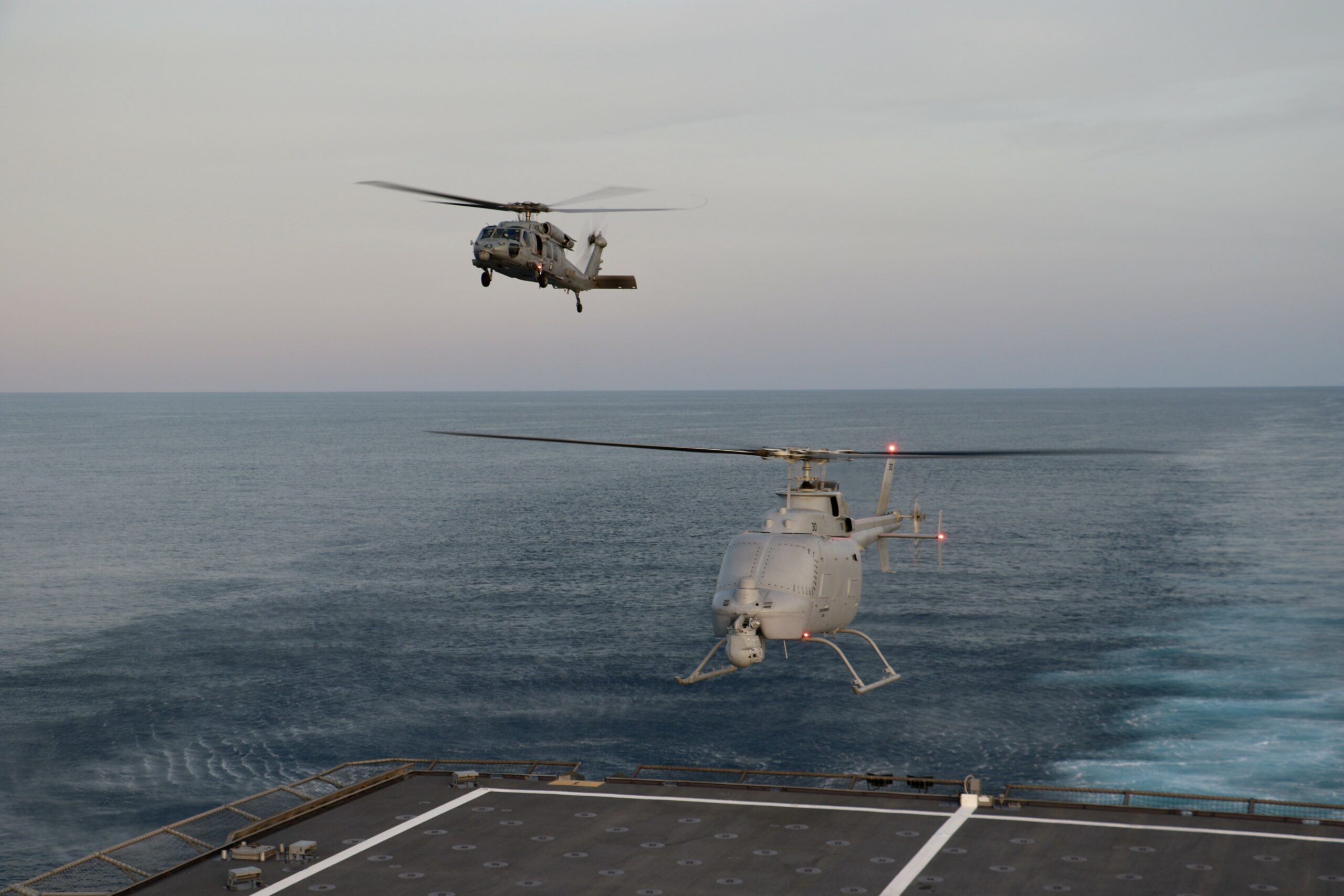
Credit: USN
FVL (MS) Requirements
The FVL (MS) program was formally initiated on 8 November 2019, when the Pentagon’s Joint Requirement Oversight Council validated the Initial Capability Document (ICD), which established the requirement for a cost effective vertical lift capability to ultimately replace the MH-60R/S and MQ-8C fleet.
The Naval Air Systems Command (NAVAIR) published a Request for Information or RFI on 28 January 2021 (updated on 9 March 2021) with a response date of 4 May 2021. The Navy emphasised that this was not a Request for Proposals (RfP), and that no solicitation documents existed at that time. Rather, the RFI was intended to inform the Navy’s planning process and support the assessment of potential solutions.
The FVL (MS) FoS will be required to have the same portfolio of mission capabilities as the current aircraft, but will be required to go above and beyond the capabilities of the Sea Hawk and the Fire Scout. New assets will be required to fill capability gaps which are insufficiently addressed by current systems. This is especially critical in regard to gaps which will ensue as adversaries develop more sophisticated naval, aerial and electronic warfare systems in the coming years. FVL (MS) will also be attuned to changing US concepts of operation. The Naval Aviation Vision 2030-2035 or NAV 2030-2035 (released by the USN in September 2021) states that the new family of systems will be designed and built specifically to support Distributed Maritime Operations (DMO).
As defined in NAV 2030-2035, “the capabilities envisioned include increased survivability, long [operating] range, persistent ISR&T, integrated air and missiles defense, long-range offensive anti-surface and anti-submarine warfare (ASW), communications and data relay, fleet logistics, and personnel recovery.” The threat paradigm in the 2030-2035 timeframe – as well as the principles of DMO – dictate that FVL (MS) be able to conduct these tasks in a highly contested environment, at greater ranges, and with greater speed, endurance, and precision. “FVL (MS) will leverage advances in AI [Artificial Intelligence] and ML [Machine Learning] sensor technology, AI and ML to fully integrate the manned and unmanned platforms to form highly effective teams, thereby reducing operator workload and increasing the speed and quality of aircrew decision-making.” The new aircraft will also require enhanced signature control to defeat opponents’ improved sensors and evade detection.
Challenges and Emerging Options
The requirement for the new aircraft to operate from destroyers and frigates will place restrictions on size and weight. This could make it challenging to incorporate the full capabilities profile that the Navy wants for the FVL (MS) FoS. The USN also hopes to collaborate to the greatest extent possible with the US Marine Corps (USMC), which is seeking to acquire its own new FoS of unmanned shipborne combat support aircraft. Here the services must decide how much space for compromise exists with regard to capabilities profiles, payload capacity and aircraft size. Whether joint procurement of a portion of the FVL (MS) fleet will actually be viable remains to be seen. The Navy also intends to leverage the synergies and innovative technology solutions from the US Army’s FVL initiatives; again the question remains as to what extent land-optimised solutions will be applicable to maritime operations. Rear Admiral Andrew J. Loiselle, director, Air Warfare Division (N98) of the Navy Staff, expects the sea service to learn from the Army’s ongoing FVL experience, especially with regard to mission systems. However, the Admiral has clearly stated that he sees no direct correlation between the Navy’s requirements and the Army’s envisaged airframes, which would be too large or too small for the maritime mission.
On the other hand, it appears as if the USN will have no dearth of industry proposals. More than 30 aircraft manufacturers and sub-system suppliers replied to the 2021 RFI. “The information provided […] included survivability as a key aspect to combating future threats, in addition to all mission capabilities to support the projected needs,” stated Navy spokesperson Megan Wasel. While the Pentagon has not revealed the names of the responding firms or details of their responses, several manufacturers have announced interest in competing for a future FVL (MS) contract.
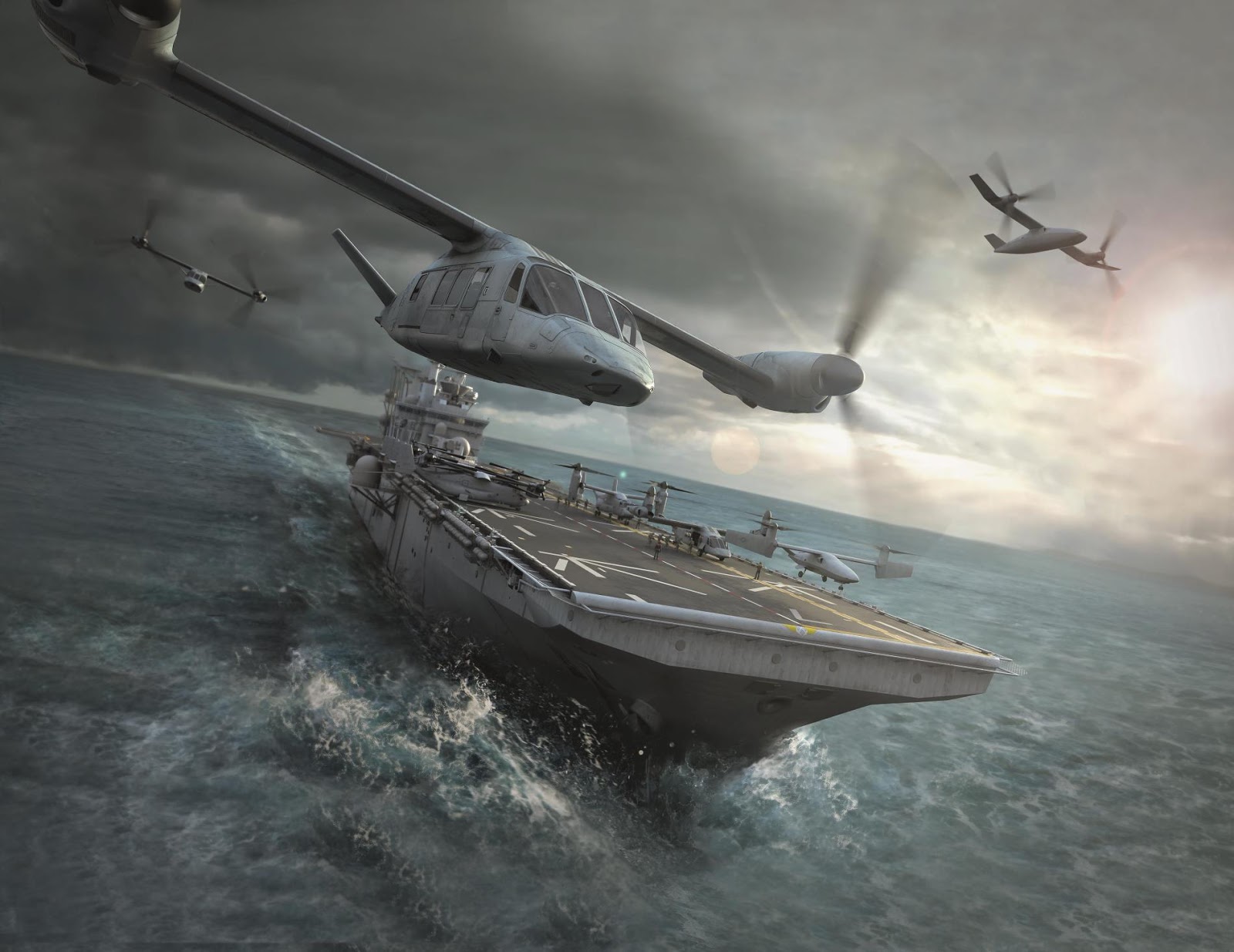
Credit: Bell
These include Bell Textron, which cites “synergies” between their V-280 Valor manned Tiltrotor aircraft (which was selected for the US Army’s Future Long-Range Assault Aircraft or FLRAA program, but is too large to operate from destroyers) and the Valor’s unmanned sister, the V-247 Vigilant. As early as 2018 Bell presented a model of a folding-wing variant of the V-280 which could ostensibly fit into the hangar of an Arleigh Burke Class destroyer. In 2022 the firm presented a downscaled version of the Vigilant which would have the same shipboard footprint as the MH-60R, and would reportedly be capable of performing every combat mission now accomplished by that manned aircraft. Depending on payload, the maritime V-247 could have an unrefuelled combat radius of up to 700 nm (1,296.4 km), extendable through in-flight refuelling.
Sikorsky, manufacturer of the Seahawk family, has neither confirmed nor ruled out offering a derivative of the manned SB>1 Defiant coaxial helicopter which lost the FLRAA competition. Northrop Grumman, maker of the MQ-8C, has announced plans to compete for the unmanned portion of the FVL (MS) program, either alone or in partnership with Leonardo Helicopters. Megan Wasel cited additional extensive coordination with other agencies, including the Office of Naval Research (ONR) and the Navy Research Lab (NRL), on a number of technology, platform and payload projects which aim to demonstrate operational capability relevant to the FVL MS mission.
Moving Forward
The replies from industry provided feedback regarding the capacity to meet the needs identified in the ICD. This information in turn flowed into the Analysis of Alternatives (AOA) drafted by NAVAIR. The analysis portion of the AOA took nine months and was completed in late 2022. The AOA team subsequently wrote a classified final report including detailed analyses of potential materiel and non-materiel solutions, their perceived effectiveness, and expected costs. In April 2023 Admiral Loiselle informed Congress that the report had been submitted to the Pentagon’s Office of Cost Assessment and Program Evaluation (CAPE). “Once [CAPE] is done with that sufficiency assessment, then we will absolutely move on to selecting a preferred alternative for the Navy, and all the costing and acquisition documentation necessary to reach a Milestone A, likely in about the [fiscal year] 2025 time frame,” Loiselle said in testimony before the House Armed Services Committee. Since then neither CAPE nor Navy leadership have announced a conclusion of the internal review process, nor any decisions on how to proceed with the FVL (MS) program.
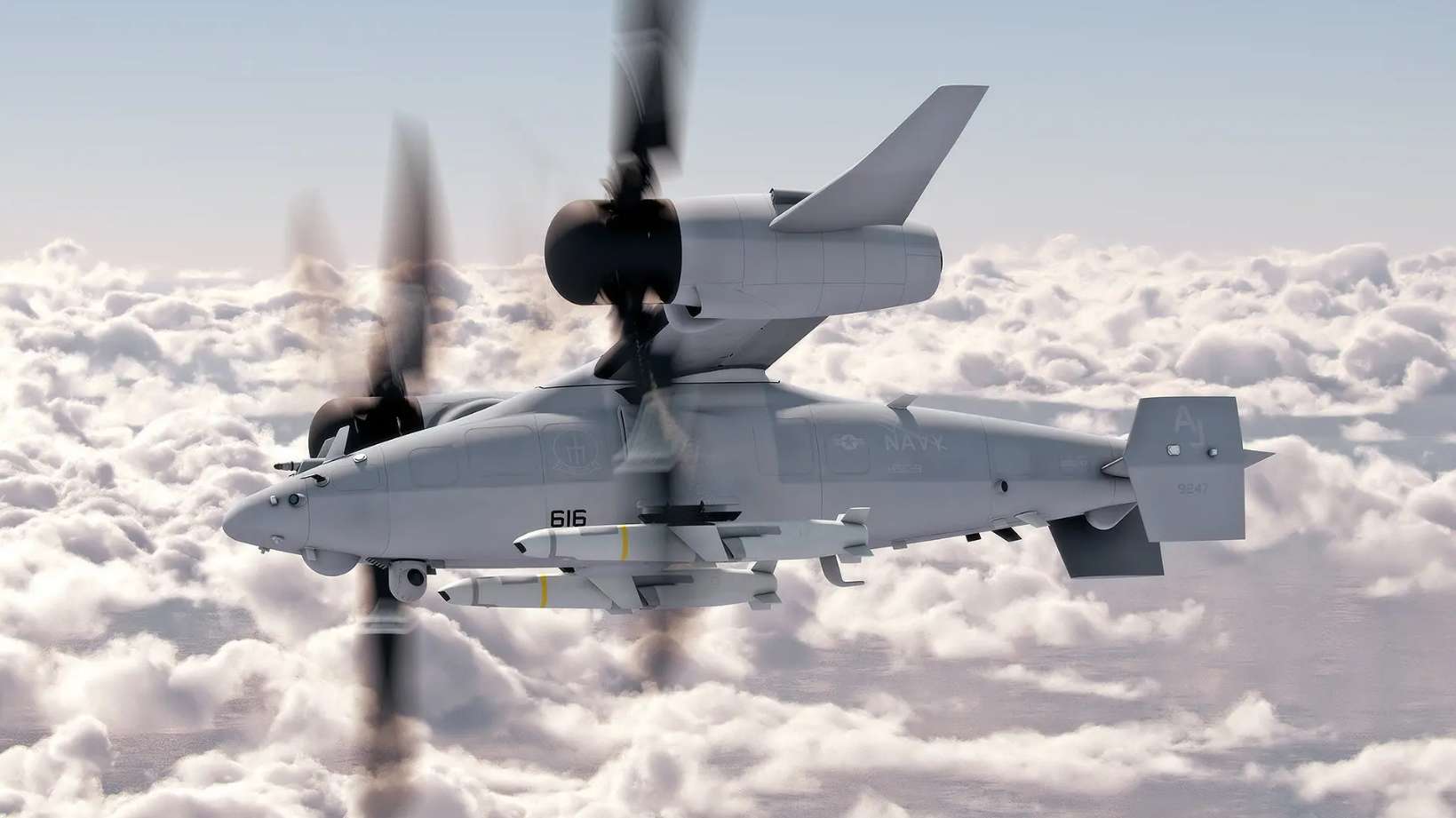
Credit: Bell
The timeframe described by Admiral Loiselle is compatible with the original aspiration defined in the 2021 RFI, which stated that “the new capability is expected to have an IOC in the mid-2030s timeframe to support all described Navy missions.” To date, the Navy has not publicly adjusted that timeframe. To maintain the viability of the current maritime strike assets, NAVAIR plans to award Lockheed Martin a Service Life Extension Program (SLEP) contract for the MH-60S fleet. According to the May 2023 announcement, the anticipated work will be conducted from May 2024 through April 2026. It is expected to add approximately seven years of service to each airframe, which would keep the Sierra operational into the early 2040s. During his April testimony Admiral Loiselle stated that a SLEP for Romeo variant was not planned until the 2030s, and then only if needed. The fact that the Navy retains an inventory of surplus MH-60R helicopters in storage will serve as a hedge against any delays in developing and fielding the next generation FVL Maritime Strike capability.
Sidney E. Dean



